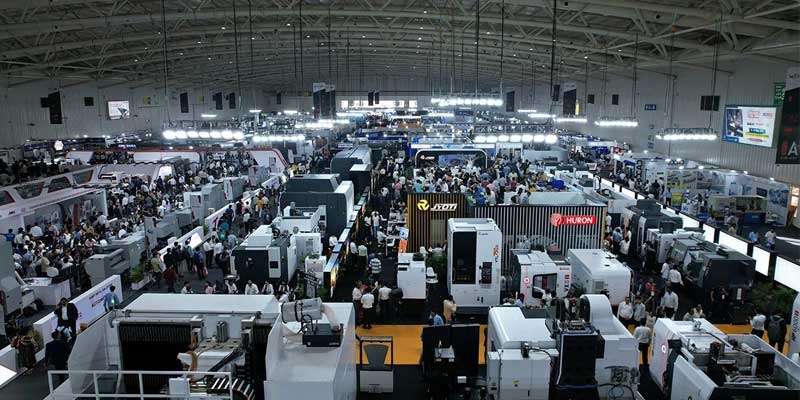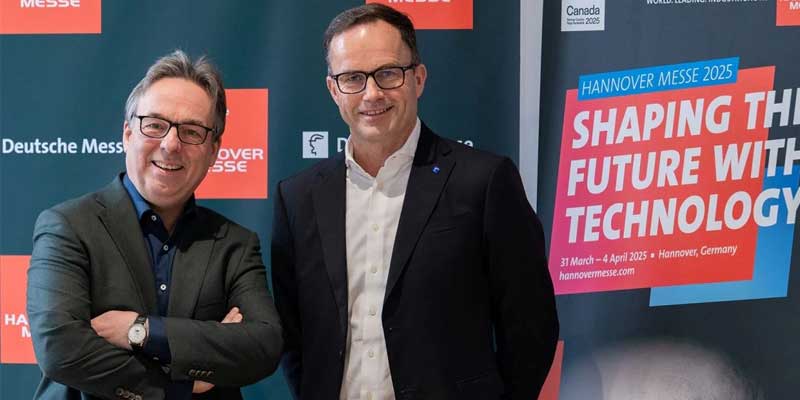Schedule a Call Back
Revolution in Ladders, Scaffolding & Material Handling Technology - I
 Technical Articles
Technical Articles- Jul 06,12
Ladder or scaffolding? How to find the best access tool for your requirements? Any high level work can be made safer by observing a few basic precepts and precautions. This two-part article offers an overview of how one can, in just a few steps, analyse a possible hazard and select the right item of access equipment for any application. All this, of course, on the basis of statutory legislation. Part-II will appear in August 2012.
What is the Item of Access Equipment to be Used for - Access or as Workstation? The first thing to do is establish the type of usage. Basically, before using the guide to access equipment, ask yourself this question: What are we dealing with here - access or a workstation? The item of access equipment serves solely as a link between the starting point (ground) and a high level workstation.
Workstation as an Item of Access Equipment

The item of access equipment doubles as a location for longer term jobs. Any (even short-term) usage of an aid to access is governed by a single simple principle: safety first! For this reason, we need to undertake an analysis at the correct time to establish any possible hazards that may exist. This isn't just a matter of common sense but is also required by legislation. They call this prescribed procedure 'risk assessment'. The aim is clear and straightforward: to achieve the highest possible degree of safety for staff deployed on a high level workstation through the selection of an appropriate item of access equipment. The responsibility for direct risk assessment lies with the employer and his senior managers. In the final analysis it is they who are most familiar with the deployment site. At the same time, both the working materials and the nature of the activity as well as, of course, the relevant environment must be taken into consideration.
Check List
A risk assessed is a risk reduced. We therefore recommend that you observe the following criteria when choosing the right access equipment (whether for purposes of access or as a workstation):
Height Differential - What height differential needs to be overcome / what height needs to be reached? This is the question that needs to be answered first to ensure that the correct item of access equipment is selected!
Frequency - How often is the item of access equipment used? The more often a job is carried out, the more important comfort and convenience in relation to access becomes.
Duration of Work - How long will the work on the item of access equipment take? The longer the work carried out is likely to take, the greater the importance of a large platform and a safe standing area secured by peripheral railings.
Escape Route - What escape routes are there should danger threaten? If the item of access equipment also serves as a means of escape [e.g., in the event of fire], rapid and safe descent by one or more persons must be made available.
Degree of Complexity - How complicated or arduous is the work? The more demanding the work, the more concentration it requires - therefore adequate working comfort and safety measures must be guaranteed.
Material - How much material/tooling will need to be transported by the access equipment? The greater the requirement for materials necessitated by the work, the more important factors such as permitted load capacity of the access equipment, safe ascent and descent and a large platform with adequate railings will be.
Number of Persons - How many persons will be working on the access equipment at the same time? Considerations as regards load capability, size and safety of an item of access equipment must not only include materials and tooling but also the number of persons who will be using the equipment. And also...are there any possible hazards in the area adjacent to the deployment location? Erecting a ladder, for example near unsecured openings or on internal traffic routes may entail hazards and should therefore be avoided or in any event thoroughly thought out.
The Right Access Equipment
Selecting the Right
Item of Access Equipment
Different groups of access resources are available to cater for the specific requirements of a particular "high level job" and at the same time ensure maximum safety. The following overview of Sagar Asia products offers users the opportunity to select the right item of access equipment for their individual applications:
Step Stools - Compact & Clever
As a rule step stools feature up to four treads and, due to the nature of their construction, even the top tread or platform is safe to stand on. The maximum platform height is 1.00 m. Step stools can be either folding or rigid. Step stools are suitable for short jobs involving a low level of risk. They are for use when working at heights of up to 3.00 metres (working height = platform height + 2.00 mm).
Examples of use:
- Assembly work at low levels
- Cleaning jobs, and
- Access to machines.
Standards:
Step stools comply with the standard DIN EN 14-183.
Ladders - Tall & Lightweight

Ladders can be quickly deployed and are very light and compact in terms of their dimensions. We differentiate between single ladders, stepladders and multi-purpose ladders; in addition, there are ladders with rungs and ladders with treads. Ladders are primarily suited to short-duration jobs involving low levels of risk and as a means of access to workstations.
Examples of use:
- Measuring and alignment work
- Changing lamps
- Access to a workstation, and
- Tightening and releasing anchorages.
Standards:
Ladders comply with the standard DIN EN 131. In addition some models of ladder also comply with: British standards BS2037 Class 1, Swedish standards INSTA 650.
Work Platforms - Mobile
& Comfortable

Sagar Asia Work Platforms feature a generously proportioned surface that offers increased stability. Because of this they enable work to be carried out where the use of both hands is required. The platforms are fitted with integral castors, which make them easy to move, and they are suitable for mobile applications. Robust bars (foot and knee level) and a railing ensure additional safety. Work platforms are appropriate for longer jobs involving the use of heavy materials or tooling. They bridge the gap between a ladder and a mobile scaffold.
Example of use:
- Lengthy maintenance and inspection jobs
- Work with machines
- Lengthy "overhead" jobs, and
- Shelf-work involving bulky and/or heavy items.
Standards:
Work platforms comply with the standard DIN EN 131 as well as the stability and guardrail protection levels specified in BGI 63
Mobile Scaffolding - Height & Stability

Mobile scaffolds feature a very large working platform with minimum dimensions of 0.75 x 1.80 m and are easy to move about on swivel castors. They provide a comfortable and safe workstation at high levels (up to 12.00 m platform height) and are also available for use by several persons at the same time if necessary (scaffolding group 3, load capacity up to 200 kg/m2). Guardrails and knee rails together with toeboards offer all-round protection. Various types of scaffolding are available, e.g., with stabilisers and chassis beams as well as folding scaffold units.
Examples of use:
- Fitting name plates at high levels
- Dry construction work
- Maintenance and repairs to factory ceilings, and
- Work of lengthy duration on walls or facades (e.g., window installation).
- Standards:
Mobile scaffolding complies with the standard DIN EN 1004 (Issue 03/2005). Mobile scaffolding is approved in accordance with "Scaffolding Category 3" (load capacity up to 200 kg/m?).
Sagar Asia India Pvt Ltd headquartered and having its manufacturing facilities in Hyderabad is a pioneer in the Asian region and India's largest manufacturer of Aluminium Access Solutions that suit various applications across diverse industrial sectors. The company's comprehensive range of access technology equipment systems is engineered and manufactured with German technology and precision meeting European and American safety standards and designs. The trademark brand names Liberti (Domestic & Commercial Ladders), Freiheit (Mobile Scaffolds, Mobile Work Platforms, Speciality & Industrial Ladders), Sagar Asia (Wind Tower Internals & Aircraft Docking Systems) conform to and are in compliance with the relevant safety directives and meet all international standards as the OSHA, ANSI, DIN, EN and many more.
(Sagar Asia Pvt Ltd, Secunderabad. Tel: 040-27728500. Fax: 91-40-27728529. Mobile: 097010-00971, 088863-30000. Email: marketing@sagarasia.com)
Related Products

Maintenance-free Iglidur® Plain Bearings
igus® (India) Pvt Ltd offers a wide range of maintenance-free iglidur® plain bearings.

Three Phase Transformers
Miracle Electronic Devices Pvt Ltd offers three phase transformers.

Grid Renewable Energy Storage System
POM Systems and Services Private Limited(Brand name: POM Power) a leading Energy Storage Solution Company offers Grid Renewable Energy Storage system and it is widely used in Industrial commercial, Read more














